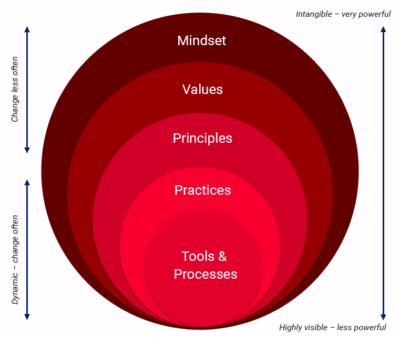
What is Agile methodology?
What is Agile methodology?
Are you curious about the Agile way of working? We have created a series of blogs just for you to get a deeper insight into what it is, how we practise it at Viking, and how you can utilise some of the principles in your own work. Here is the first blog of the series, but stay tuned for the other ones as well!
The Agile methodology lets teams offer value to their clients more quickly and with fewer difficulties through an adaptive approach to project management and software development. An agile team produces work in manageable, small-scale increments rather than risking all on a “big bang” launch. Teams thereby develop a built-in mechanism for fast adjustment to change, since requirements, plans, and outcomes are regularly assessed.
How it works
This methodology is not predicated on delivering output faster, but streamlining and improving the flow of work and producing the results your company and consumers require. Agile was formally introduced in February 2001 with the publication of the “Manifesto for Agile Software Development” by a group of software development executives. Four ideals and twelve principles make up this manifesto.
The core values of agile include the following ideals:
• individuals and interactions over processes and tools;
• working software over comprehensive documentation;
• customer collaboration over contract negotiation; and.
• responding to change over following a plan.
By developing goods or services that satisfy customers’ requirements and expectations, the ideals mentioned in the manifesto encourage a process that prioritises quality.
We have recreated the agile ‘onion’ envisaged by Simon Powers from Adventures with Agile. It is a way to visualise the idea that some factors are easier to change and require less time, while others are difficult to navigate but pay off in the long run. Tools and processes can change over time and are easily visible, but are the more performative side of agile. The principles, values, and mindset take time to change and are intangible, but very powerful.
Agile projects are divided into small, repeatable periods called sprints or iterations, which are generally one to four weeks long. Projects are divided into manageable pieces during sprints. Teams only plan one sprint at a time, and they make adjustments for subsequent sprints based on the results of the preceding one.
Some agile principles
There are a total of twelve agile principles, but it is up to organisations and teams to determine how much of it they want to incorporate. We will discuss two of these principles, but of course the others can be found within the agile manifesto.
One of the important principles of agile is to:
“Welcome changing requirements, even late in development. Agile processes harness change for the customer’s competitive advantage.”
One of the manifesto’s main ideas is to promote flexibility and discourage rigidity in procedures. The premise is that since nothing can be fully controlled and made to function flawlessly, it is crucial to maintain a fluid approach to systems. Furthermore, teams should be flexible enough to adjust to mistakes and changes as well as to the most recent project advances.
Another key principle posited in the manifesto is:
“At regular intervals, the team reflects on how to become more effective, then tunes and adjusts its behavior accordingly.”
There are several practices that constitute being agile. Many of these practices are reflective in nature, and involve activities that focus on taking a critical look to see what has been working and what needs changing. For instance, at the conclusion of each iteration in agile software development, a meeting known as a retrospective is held. The team discusses the iteration’s events in detail and identifies actions for improvement in the future during the retrospective.

Nobo Small Wall Mountable Magnetic Whiteboard Weekly Planner 1903780 Lacquered Steel, Cork 585 x 190 mm White, Brown
The agile mindset
The best method to become more agile in processes is to review the manifesto’s ideals and tenets while putting the agile mindset into practise. The agile mindset is the most powerful part of agile methodologies. Agile thinking is characterised by a growth mentality, a can-do attitude, innovation and openness to criticism, as well as learning, expansion, and continual improvement.
Finding out what works for you in your team, department, and organisation is a key tenet of being agile in the real world. Having the drive for change and empowering your employees to improve their ways of working and processes will help move your company towards being more agile.
There are many tools that can be used to plan sprints and visualising certain aspects of the project. For instance, check out these planning boards for helpful visual aid to organise your sprints better. In case you are looking for something more colourful to make planning more fun, browse through our sticky notes collection.











